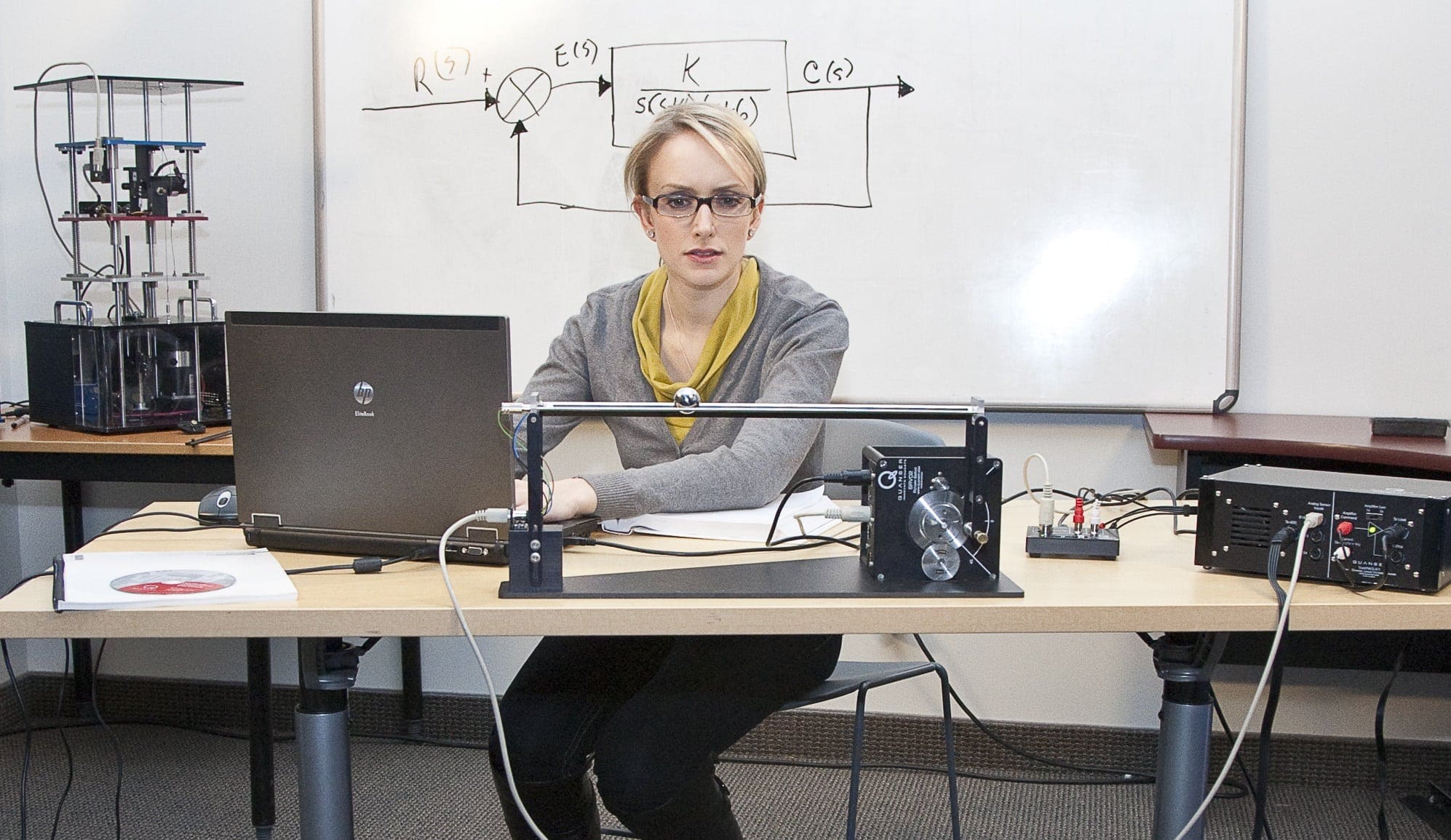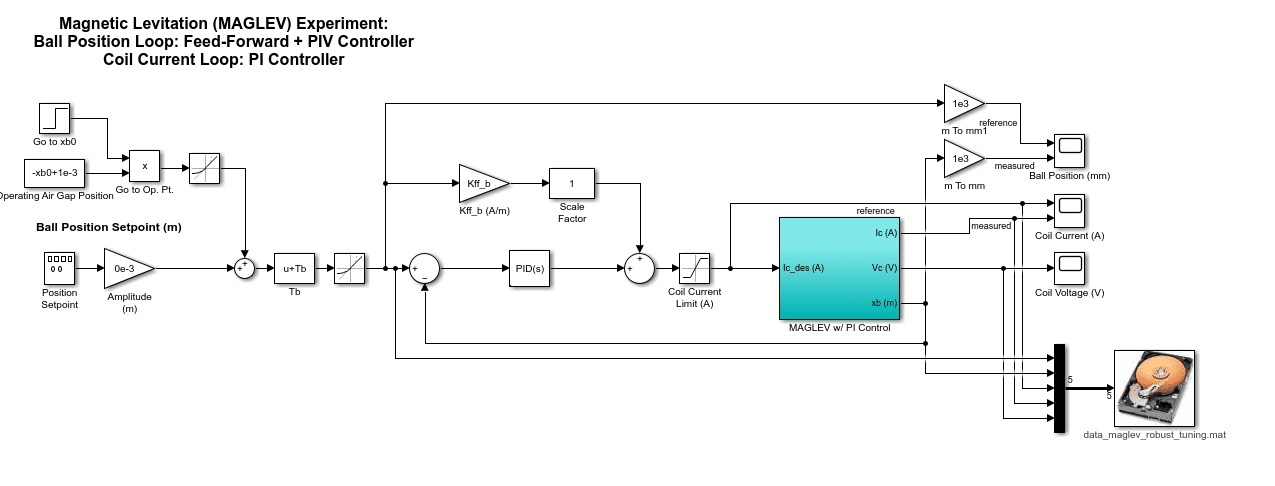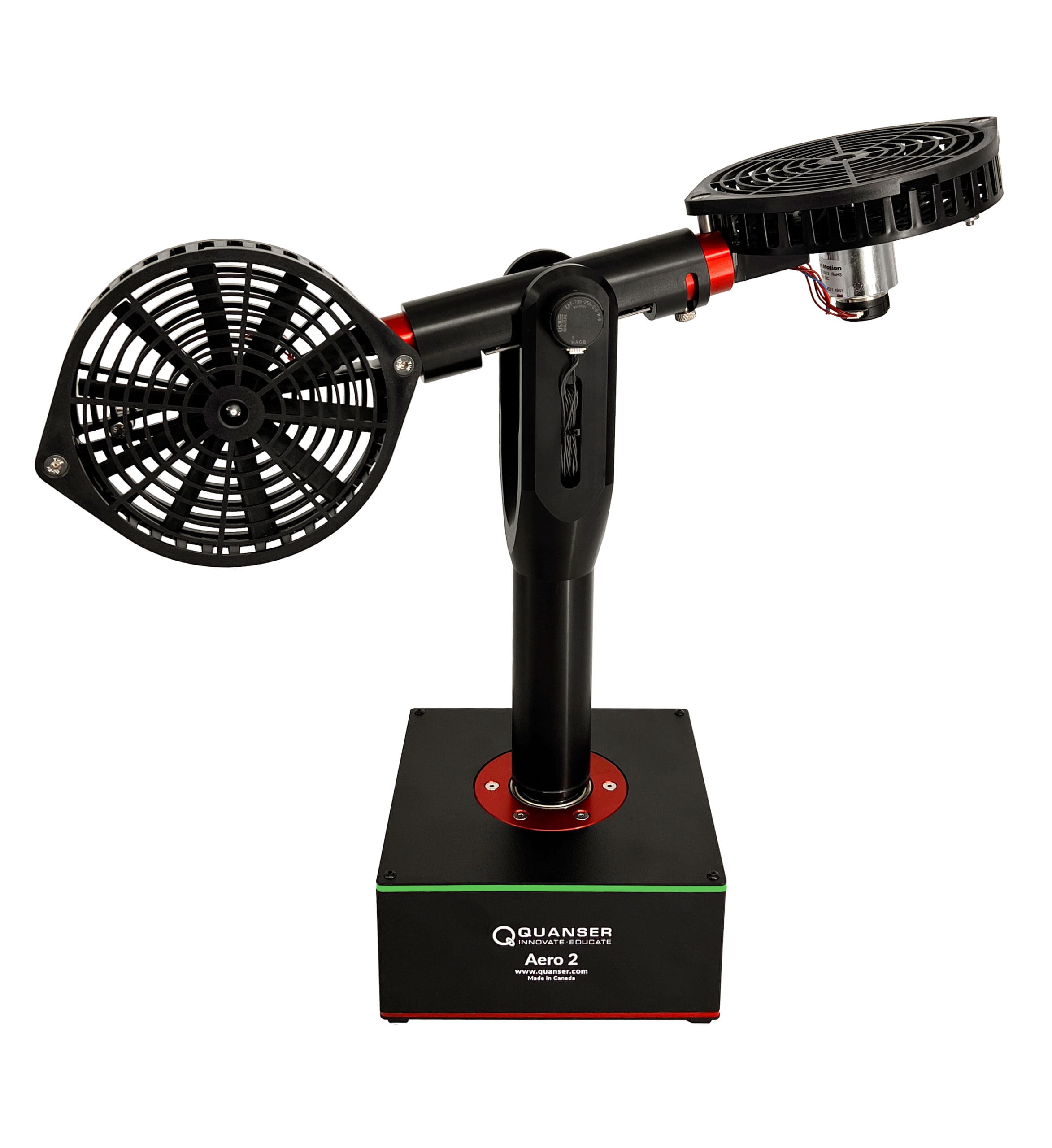
Six years ago, we released the Quanser Aero, the first aerospace control platform designed both for controls research and for hands-on use by undergraduate students in the lab. It stood unrivalled for that entire time, but we always knew there was room for improvement. The best had to get better.
Starting in 2019 we began to gather information from users and distributors on how customers used the Aero 1, what key features could be improved, and if any new features were needed. This project would be shelved in 2020 due to the pandemic, but with the supply chain parts shortages starting in 2021 the Areo 1 became prohibitively expensive to build and Aero 2 became a top priority. So we sat down with the Aero 1 and started looking at opportunities for refinement.
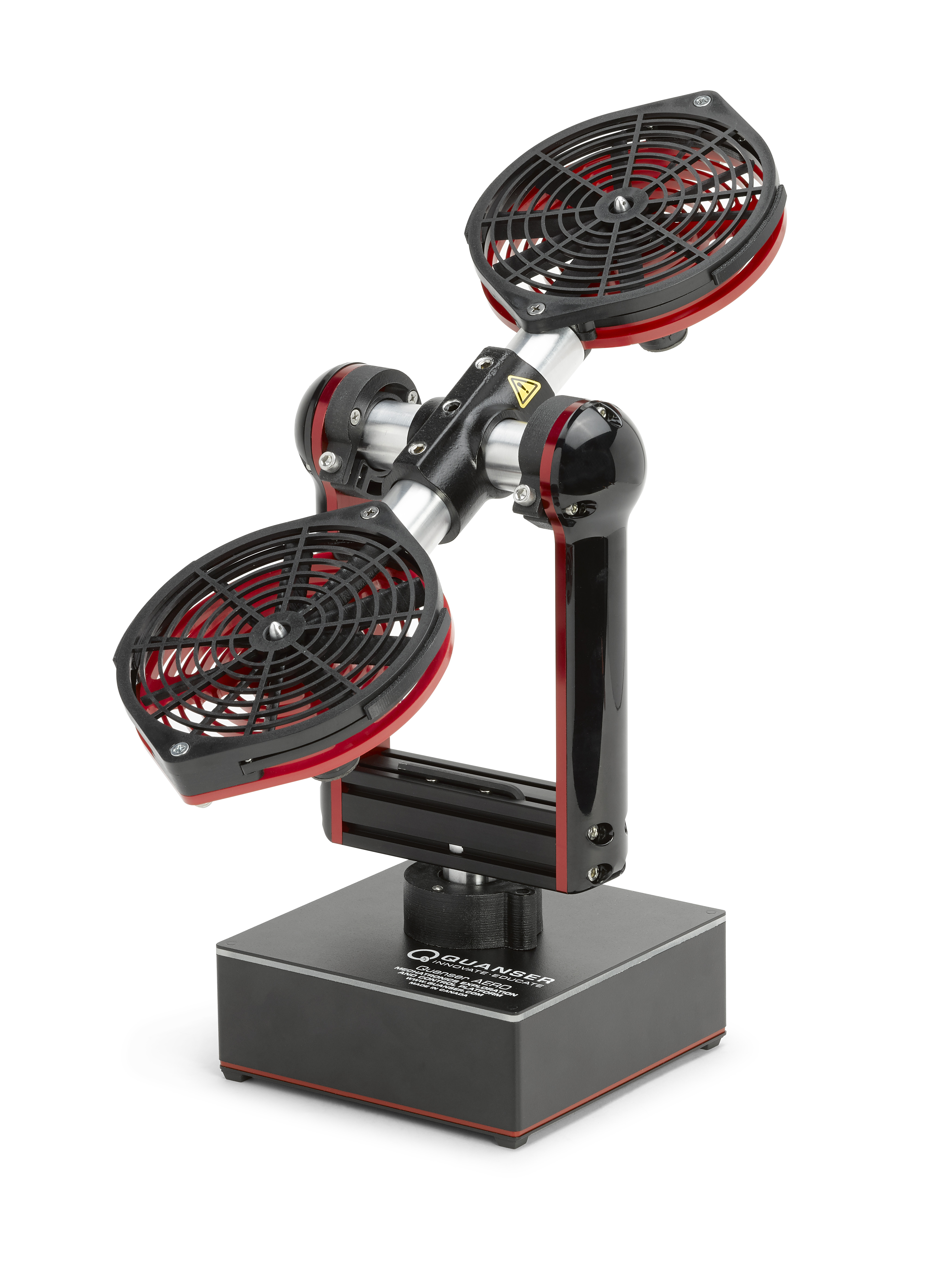
QUANSER AERO
With the opportunity and resources for a complete redesign, we had a chance to take the already revolutionary design of the Aero 1 and make it even better. There were three areas on which we decided to focus our improvements.
Improved Mechanical Design
The first change we undertook was massively simplifying the yolk and the core assembly of the Aero 2, now consisting of only two major parts, instead of the ten components used in the Aero 1. This made the product much easier to assemble and tune, and improved the robustness of the product under regular handling. One commonly requested improvement was to make the Aero 2 easier to pick up by making it safe to lift using the main upright, as this was how students would handle the AERO even if it was not recommended. Further improvements to the axis locks and thruster attachment hardware allowed for faster and more accurate adjustment of the hardware configuration.
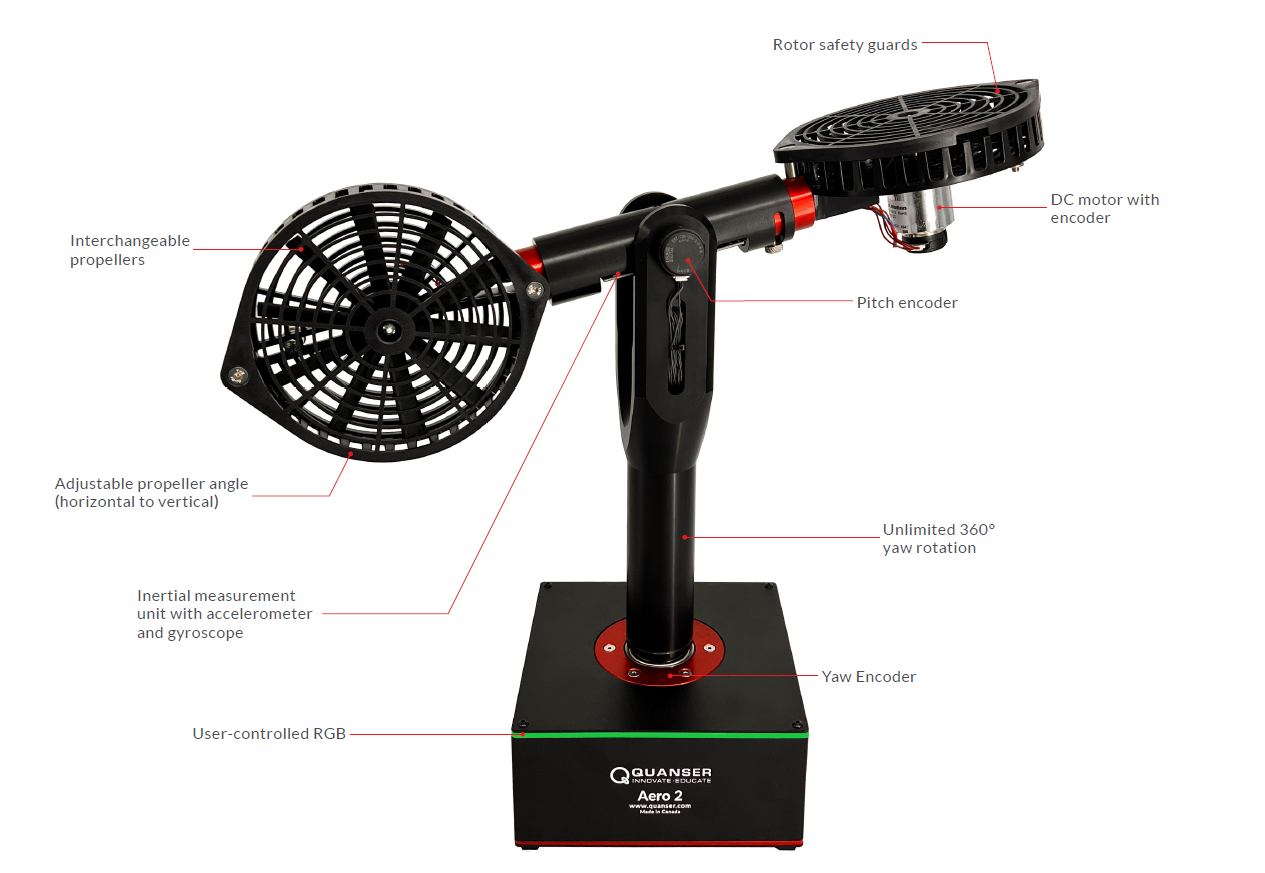
Features of Aero 2
The resulting design is functionally very similar to the already excellent AERO, but is even better suited to life in a student lab. The new design is also easier to tune and more responsive because of special attention paid to the system dynamics…
Tuned Dynamics
Because the Aero 1 was essentially the first of its kind, we didn’t really know what kind of dynamic response would be most interesting for a lab setting. To this end we attempted to replicate the general design of the 2-DOF Helicopter experiment which has been a mainstay of our controls research offering for many years. The result was a system which was unexpectedly stable due to the mass of the permanent magnet DC motors used in the thrusters. This actually made for a very interesting dynamic response as the harmonic motion of the body was pronounced and consistent. However when experimenting with modifying the dynamics of an AERO we discovered that raising the center of gravity and making the system intentionally more unstable would expand both education and research capabilities at the cost of a slower and less pronounced harmonic motion.
Interestingly the controller shown above was created and tuned for the Aero 1, showing how closely the performance of the Aero 2 matches the original. However, some customers expressed a desire to be able to change the dynamics of the system…
Adjustable Center of Mass
The most outstanding new feature on the Aero 2 is the inclusion of adjustable tungsten masses on each thruster. By sliding these masses towards or away from the pivot, the center of mass of the Aero can be moved towards one or the other thruster. This allows for easy balancing, or alternately the Aero 2 can be made intentionally unbalanced for an additional complication for control design. While primarily an ease-of-use feature, this feature also opens a wide range of new control topics in robust and adaptive control.
As you can see, the Aero 2 retains all the features that made the Aero 1 the best, and is even better for user experience. The whole Aero 2 R&D team is extremely proud of the result. Check out these awesome videos of the new Aero 2 in action and visit the Aero 2 product page for more information.

